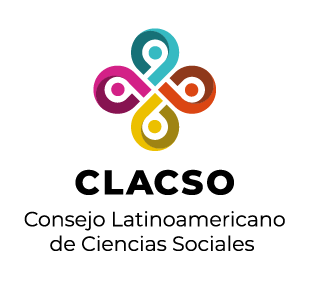Red de Bibliotecas Virtuales de Ciencias Sociales en
América Latina y el Caribe

Por favor, use este identificador para citar o enlazar este ítem:
https://biblioteca-repositorio.clacso.edu.ar/handle/CLACSO/155346| Título : | Eutanasia y distanasia: dos extremos opuestos Eutanasia and distanasia: two extreme opposites Euthanasie et distanasie: deux extrêmes opposés Eutanasia e distanasia: due estremi opposti Eutanásia e distanásia: dois extremos opostos |
| Palabras clave : | therapeutic cruelty;fierceness;dignified death;natural death;Principle of therapeutic proportionality;ensañamiento terapéutico;encarnizamiento;muerte digna;muerte natural;principio de proporcionalidad terapéutico |
| Editorial : | Pontificia Universidad Católica del Ecuador - PUCE: Centro de Publicaciones y Dirección de Investigación |
| Descripción : | RESUMENCuando se habla de la muerte digna existen dos extremos opuestos que conviene distinguir: la eutanasia y la distanasia. Mientras la eutanasia intenta acelerar la muerte, el encarnizamiento terapéutico se intenta retardarla o evitarla “a toda costa”. Entre ambos extremos parece haber un justo medio, que se intenta definir de la manera más nítida posible en este artículo. Para hacerlo, después de una breve in-troducción donde se aclara el método colativo y deductivo a usar (ca-pítulo I), el autor analiza los valores fundamentales de la ciencia y de la práctica médica (capítulo II), los cuidados debidos al paciente, donde toca el muy utilizado principio de proporcionalidad terapéutica (capí-tulo III); desarrollando lo anterior, distingue los medios ordinarios de subsistencia, las curas mínimas y las terapias ordinarias (o proporcio-nales). Con todos estos antecedentes ya se puede entrar a definir en el capítulo IV qué debe entenderse por “buen morir” y cómo son extre-mos irrazonables, tanto la eutanasia, como la distanasia. La conclusión principal es que resulta desproporcionado matar para calmar el dolor (la eutanasia): dar muerte a alguien es un medio desproporcionado para calmar el dolor; a la vez, la distanasia o ensañamiento terapéutico es igual de irrazonable, porque trata de mantener la vida a toda costa con medios que resultan desproporcionados. Solo hay obligación ética y jurídica de dar al paciente terminal las terapias proporcionales.
ABSTRACTWhen talking about death with dignity there are two opposite extremes that should be distinguished: euthanasia and dys-thanasia. While the first one seeks to accelerate death, the second one tries to delay or avoid it “at any cost”. Between both ends there seems to be a right balance, which this article tries to define as clearly as pos-sible. To do so, after a brief introduction where the collative and de-ductive methods used are presented (chapter I), the author analyzes the fundamental values of science and medical practice (chapter II), the care due to the patient, where the widely used principle of thera-peutic proportionality comes in (chapter III); developing this, the dis-tinction between ordinary means of subsistence, minimum cures and ordinary (or proportional) therapies take place (chapter IV). With all this background, the author can define what should be understood by “good death” and identify its unreasonable extremes, both euthanasia and dysthanasia. There is only an ethical and legal obligation to give a terminal patient the proportional therapies. The main conclusion is that killing a person is a disproportionate way to calm pain and dys-thanasia is equally irrational.
KEY WORDS: therapeutic cruelty, fierceness, dignified death, natu-ral death, Principle of therapeutic proportionality.
JEL CODE/ CLASIFICACIÓN JEL: KI, I12 When talking about death with dignity there are two opposite extremes that should be distinguished: euthanasia and dys-thanasia. While the first one seeks to accelerate death, the second one tries to delay or avoid it “at any cost”. Between both ends there seems to be a right balance, which this article tries to define as clearly as pos-sible. To do so, after a brief introduction where the collative and de-ductive methods used are presented (chapter I), the author analyzes the fundamental values of science and medical practice (chapter II), the care due to the patient, where the widely used principle of thera-peutic proportionality comes in (chapter III); developing this, the dis-tinction between ordinary means of subsistence, minimum cures and ordinary (or proportional) therapies take place (chapter IV). With all this background, the author can define what should be understood by “good death” and identify its unreasonable extremes, both euthanasia and dysthanasia. There is only an ethical and legal obligation to give a terminal patient the proportional therapies. The main conclusion is that killing a person is a disproportionate way to calm pain and dys-thanasia is equally irrational. KEY WORDS: therapeutic cruelty, fierceness, dignified death, natu-ral death, Principle of therapeutic proportionality. JEL CODE: KI, I12 |
| URI : | http://biblioteca-repositorio.clacso.edu.ar/handle/CLACSO/155346 |
| Otros identificadores : | http://www.revistarfjpuce.edu.ec/index.php/rfj/article/view/215 10.26807/rfj.vi6.215 |
| Aparece en las colecciones: | Facultad de Ciencias Humanas, Pontificia Universidad Católica del Ecuador - FCH-PUCE - Cosecha |
Ficheros en este ítem:
No hay ficheros asociados a este ítem.
Los ítems de DSpace están protegidos por copyright, con todos los derechos reservados, a menos que se indique lo contrario.